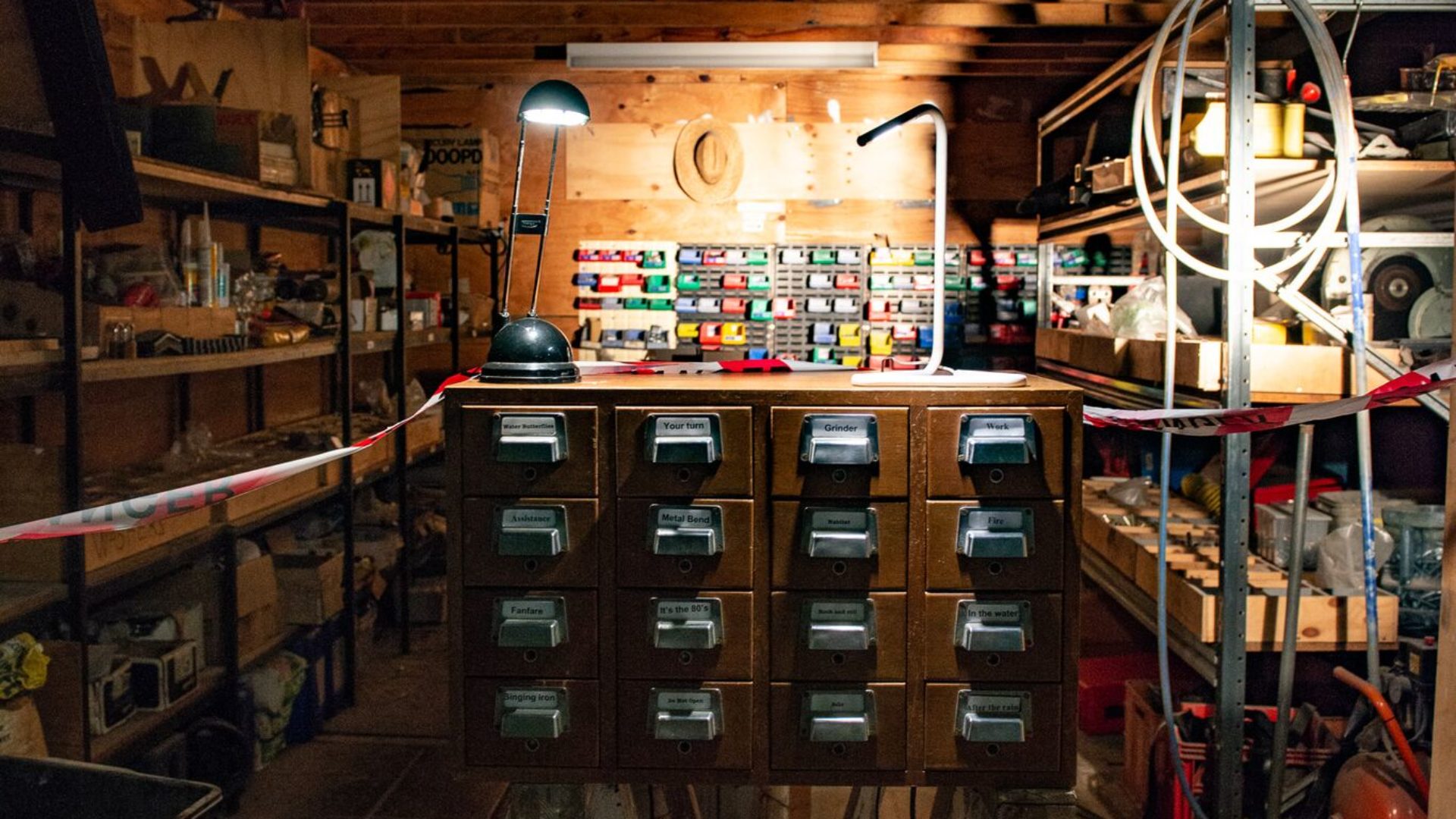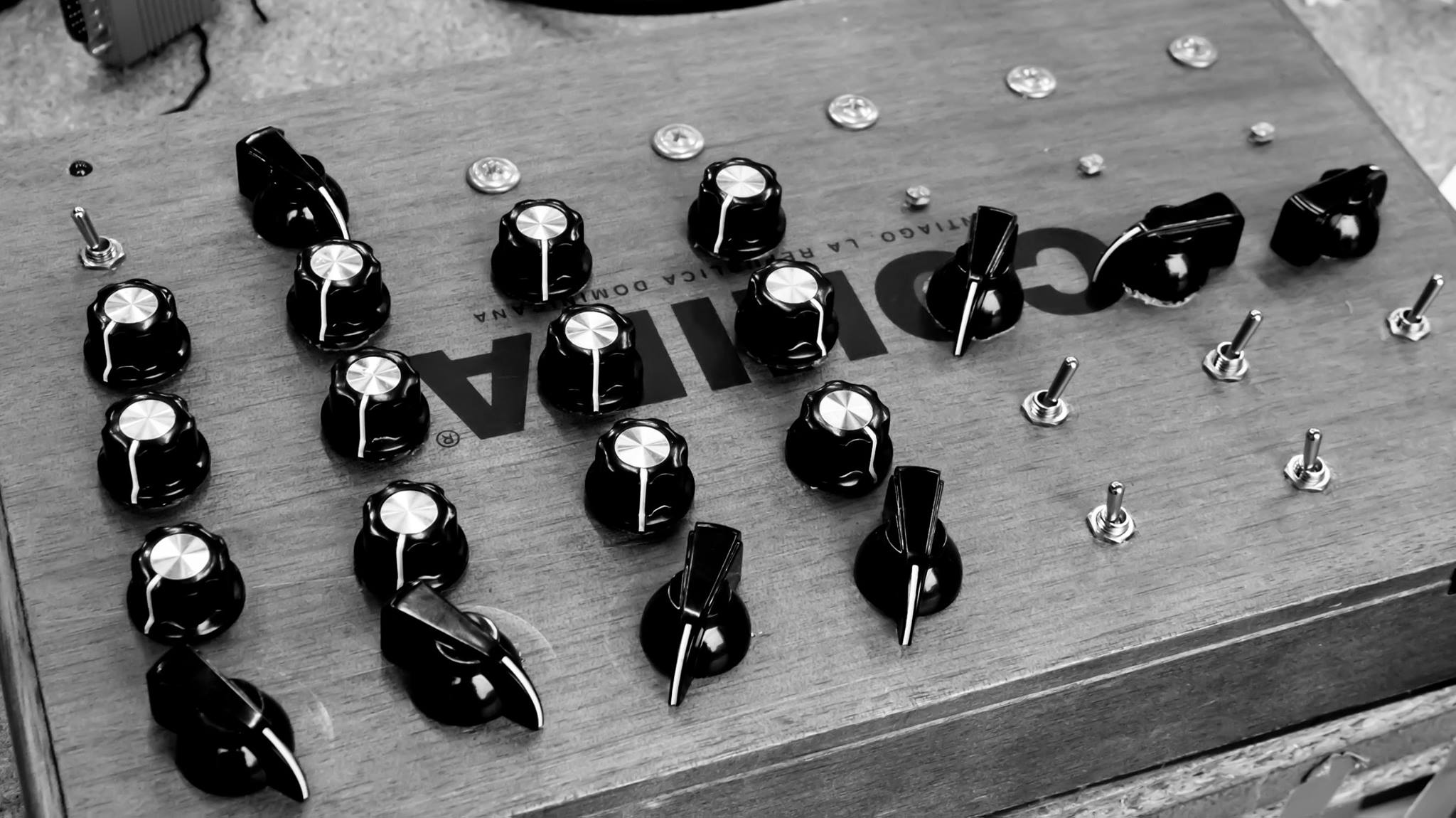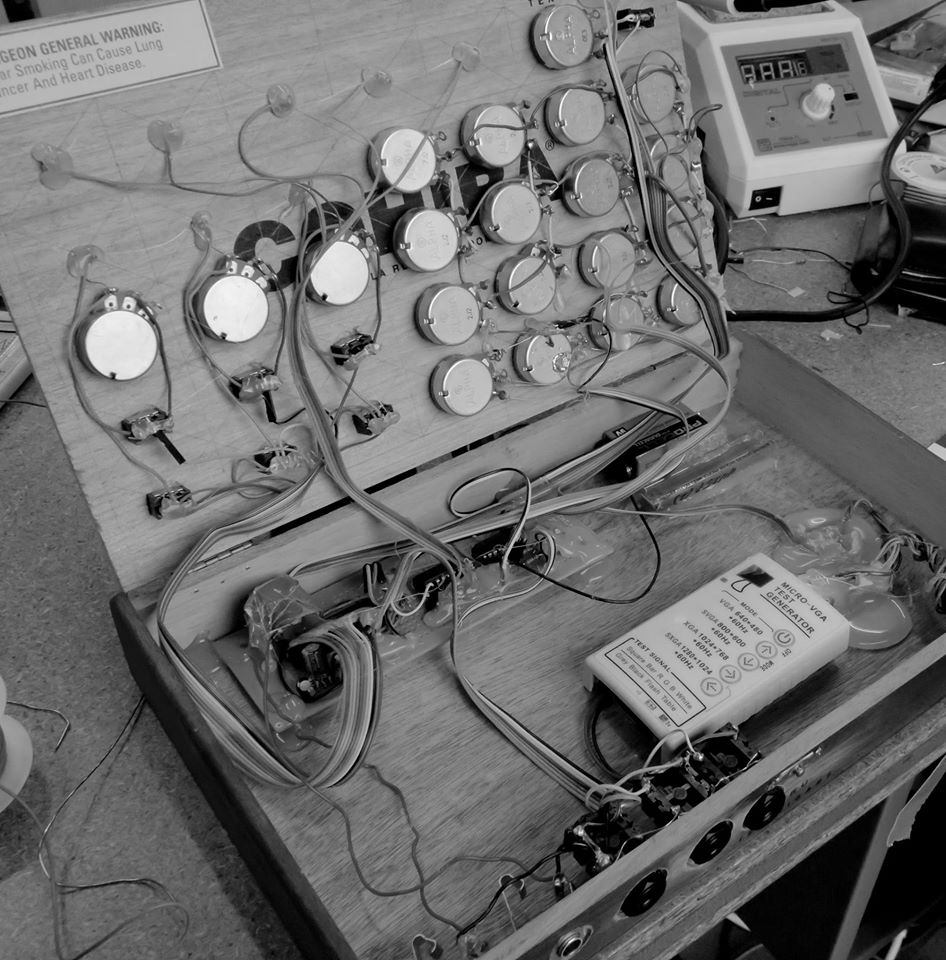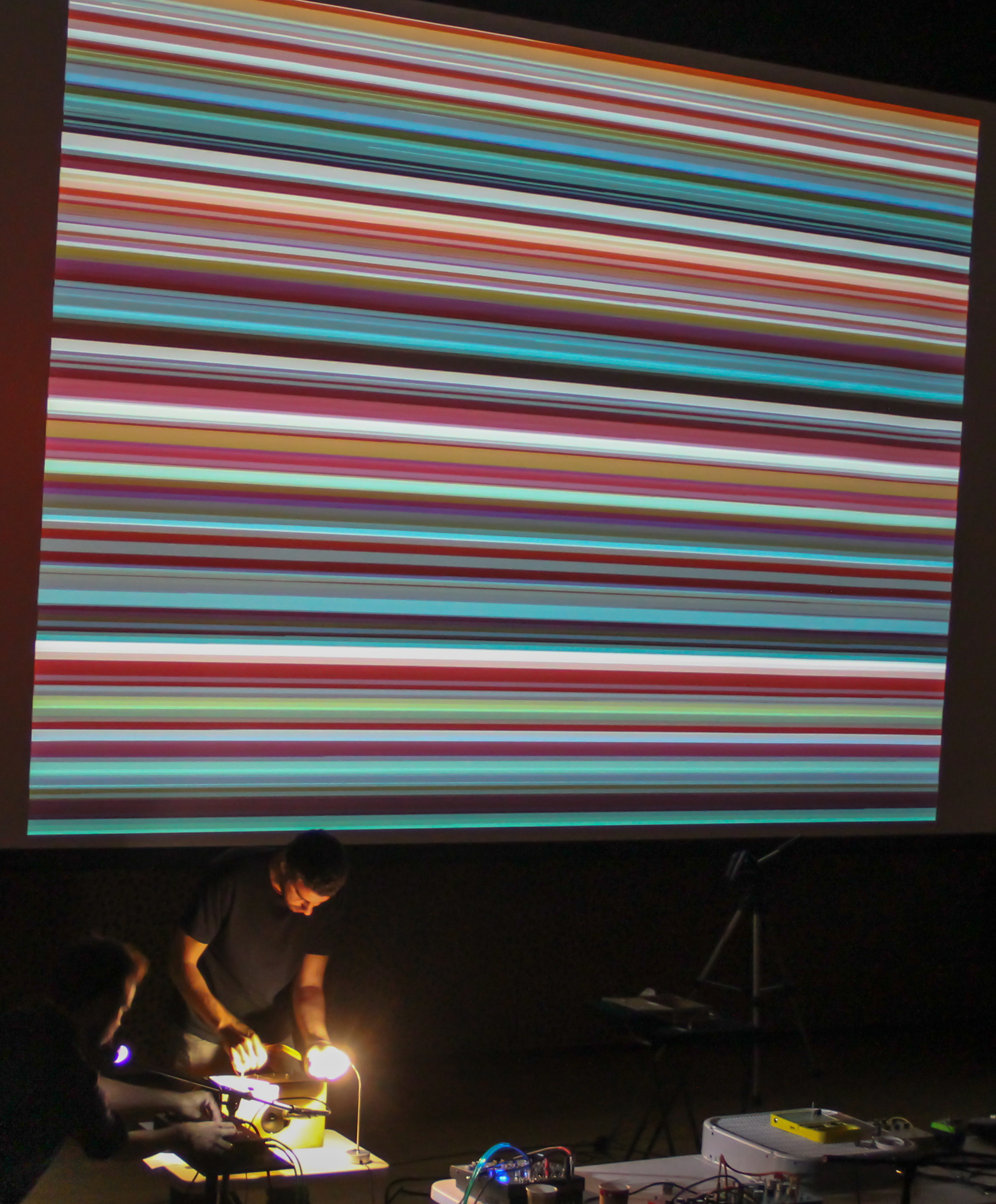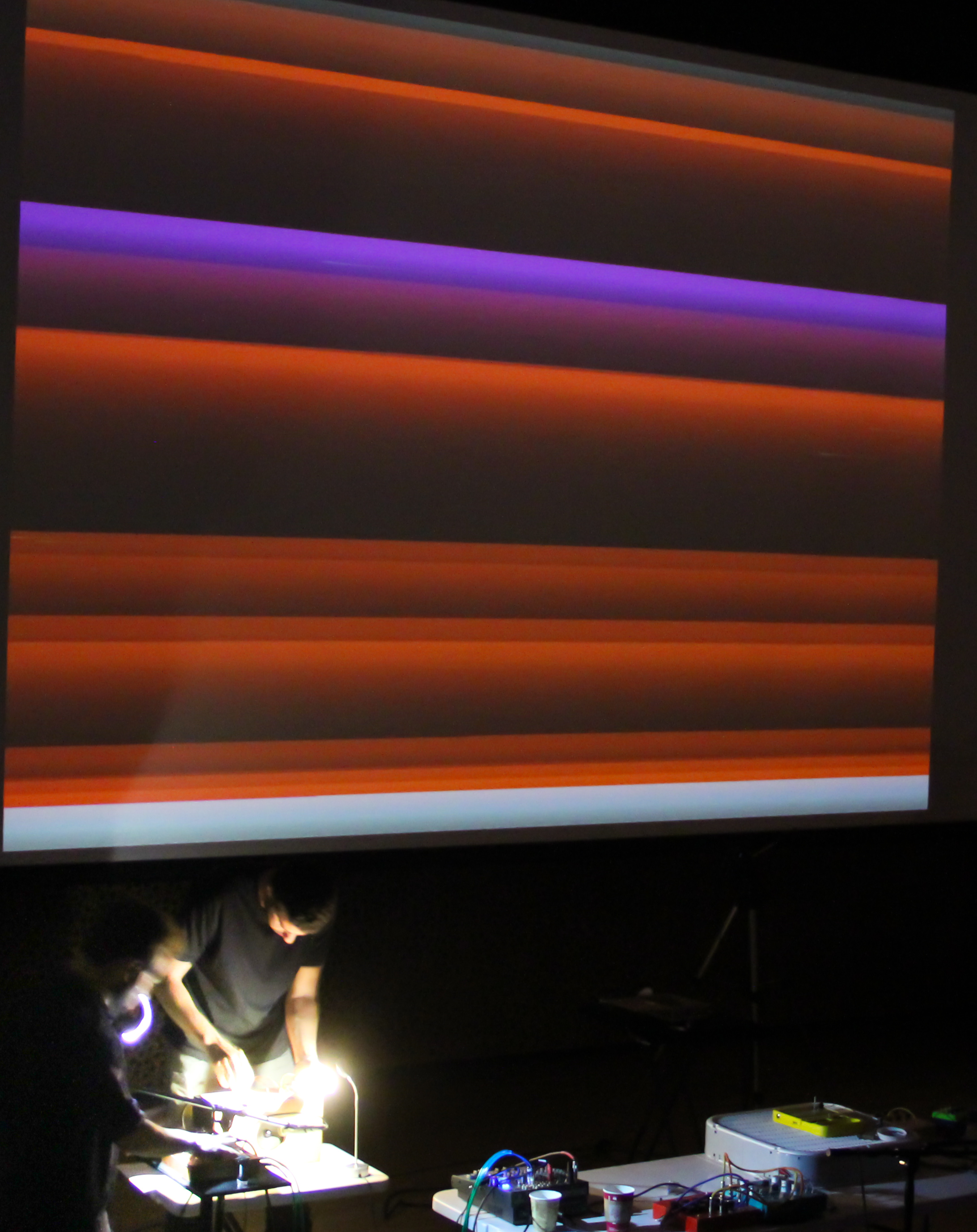These three sketches for analogue audio visual instrument (AAV 1.0) are a first attempt aimed at figuring out what I might achieve with a cigar box connected to loudspeakers and a projector. Although the visuals are very simple, I find them quite beautiful, but I’m less convinced by the sound world, which could be much more flexible (sequencer, filters, patch bay, etc). However, I fear further development on the sonic side of things could easily result in a huge modular synthesizer, which is a worthy aim, but is not the goal of this project.
Yes but what is AAV 1.0?
AAV 1.0 features three oscillators on a 40106 chip, each oscillator has a switchable pitch range and control is via potentiometer or light dependent resistor. The three oscillators are blended via 1) a resistor mixer for simple balancing 2) a diode mixer for half wave rectify/quasi ring modulation 3) a dual stage distortion circuit on a 4049 chip (also featuring touch points on the feedback capacitors for tactile interplay). There are separate volume controls for each of these outputs, plus a master volume. Visuals revolve around a $8 VGA tester, which provides synchronization and safe connection to a variety of inputs, the wiring from the VGA tester is configured to feed audio signals directly to the red green blue (RGB) color channels (though I’ve pushed the levels somewhat using four stages of a 4049 chip). Three potentiometers on each of the three oscillator voices as well as on the master output allow a variety of colors to be reproduced, and up to four layers of visual activity are supposed to be observable (though the master tends to override). Panning is via the lowest oscillator i.e. the audio output is basically mono, but one oscillator drives two light emitting diodes (LEDs) which are coupled to light dependent resistors that feed the left and right audio output sockets (one LED is inverted via the 4016). There’s also a battery starve function and three audio input sockets, which allow external audio to be fed into the visual system.
Duo improvisation with Peter Bussigel as part of the mid-term concert for 1240F Circuit Bending and Hardware Hacking as Musical and Artistic Expression. This was our first time playing together and also the first performance with these new instruments, both of which were only ‘completed’ on the day of the performance. There’s more work (and play) to be done but I like the raw energy that is captured here. Recorded November 8th 2014 at Grant Recital Hall Brown University by Jim Moses.
